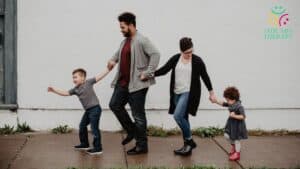Brushing hair can be a daunting task, particularly for children with autism. Various sensory sensitivities and challenges arise during this everyday activity, making it essential for parents and caregivers to understand and address these issues.
Many children with autism experience discomfort when having their hair brushed due to sensory reasons. The sensation of a brush on their sensitive scalps can feel overwhelming and painful, which often results in resistance to the activity.
Sensory processing disorder is a common feature of autism that causes the brain to interpret sensory information differently than typical sensory processing. Understanding this can help caregivers approach the task more effectively.
Selecting the Right Brush
Choosing the right brush can significantly enhance the hair-brushing experience for children with autism. A sensory-friendly brush designed to reduce discomfort can transform hair grooming from a stressful chore into a more tolerable task.
When selecting a brush, parents and caregivers should consider certain features such as soft bristles, a wide-tooth comb, and an ergonomic handle.
Selecting a suitable brush is a crucial factor in providing a more positive hair-brushing experience for children with autism. Caregivers should experiment with different options and observe their child’s responses to find the best fit.
Understanding these challenges equips parents and caregivers with the knowledge to create a more manageable and compassionate hair care routine.
Managing Hair Brushing in Autistic Children
Managing hair brushing for children with autism can be a challenging task. As such, implementing effective strategies can help make the process smoother for both the child and the caregiver.
For starters, clear communication is vital when it comes to hair brushing. Parents and caregivers can explain the hair brushing process to the child in simple terms, letting them know what to expect. Using visual aids, such as social stories or pictures, may help children understand the routine better.
Encouraging the child to express their feelings about hair brushing can also foster a sense of control.
Distraction techniques can also effectively reduce anxiety and resistance during hair brushing. Engaging the child with favorite toys, stories, or music while brushing their hair can redirect their focus.
Allowing the child to choose a song or activity they enjoy can make the experience less daunting and promote a sense of cooperation.

Additionally, if haircuts are part of the issue, a professional can assist in making the experience as comfortable as possible, reducing stress and anxiety for both the child and the caregiver.
Employing these strategies can help create a more positive experience for both the child and the caregiver when it comes to brushing their hair. It is essential to remain patient and flexible, considering the individual needs of the child throughout the process. Similarly, other daily grooming routines can also present unique challenges—check out our article Shaving Tips for Autistic Adults to Try for more helpful strategies tailored to sensory sensitivities.
The Role of Tools and Accessories
Needless to say, the use of the right tools and accessories can significantly improve the experience of brushing hair for children with autism. By using appropriate equipment and techniques, parents and caregivers can help ease the stress associated with hair grooming.
Blunt-tipped combs and brushes are highly recommended for children with autism. These tools help minimize discomfort and the potential for meltdowns during hair brushing sessions.
The rounded tips reduce the chances of scratching or poking the scalp, making the grooming process less intimidating.
In addition to using blunt-tipped tools, incorporating a gentle head massage before brushing can help prepare the child for the experience. This scalp stimulation can promote relaxation and make the brushing process more enjoyable.
Meanwhile, soft hair accessories, such as scrunchies and hairbands without metal parts, are also beneficial. They can hold hair in place without causing discomfort, making them ideal for individuals with sensory processing issues.
These accessories prioritize comfort, which allows parents to manage grooming without adding unnecessary stress.
Choosing accessories that emphasize softness can prevent additional sensory conflicts, helping children feel more at ease during grooming.
At the same time, implementing scalp stimulation techniques before brushing can significantly enhance the overall experience. Gentle head massages can soothe the child and help them acclimate to the sensation of hair brushing. This technique can also foster positive associations with hair grooming.
Using these tools and techniques strategically can transform hair brushing from a stressful chore into a more manageable and positive experience.
Prioritizing comfort and well-being enables parents and caregivers to help children embrace grooming routines while accommodating their unique sensory needs.
The Key Takeaway
In the end, brushing hair doesn’t have to be a daily struggle for children with autism. By understanding their sensory sensitivities, choosing the right tools, and using gentle, thoughtful strategies, parents and caregivers can turn a challenging routine into a calmer and comfortable experience.
With patience, flexibility, and the right support, hair brushing can become not just manageable but even a moment of connection and care. We at Jade ABA Therapy offer compassionate, personalized care that helps children thrive in everyday routines like grooming and hygiene.
If you’re looking for high-quality ABA therapy in Maryland, our dedicated team is here so we can help your child grow with confidence. Contact us today to learn more about how our team can support your family’s unique needs.
Sources:





